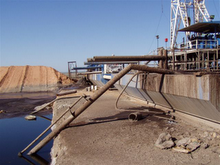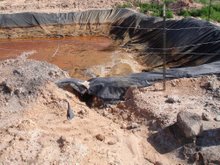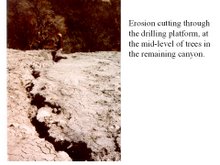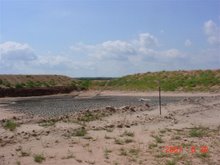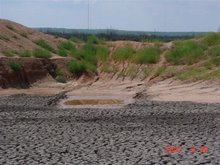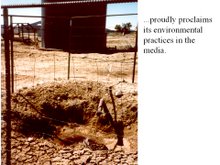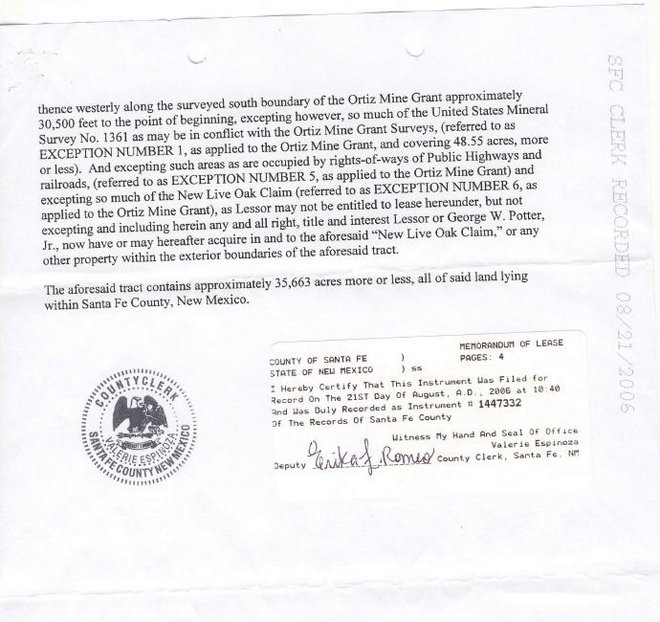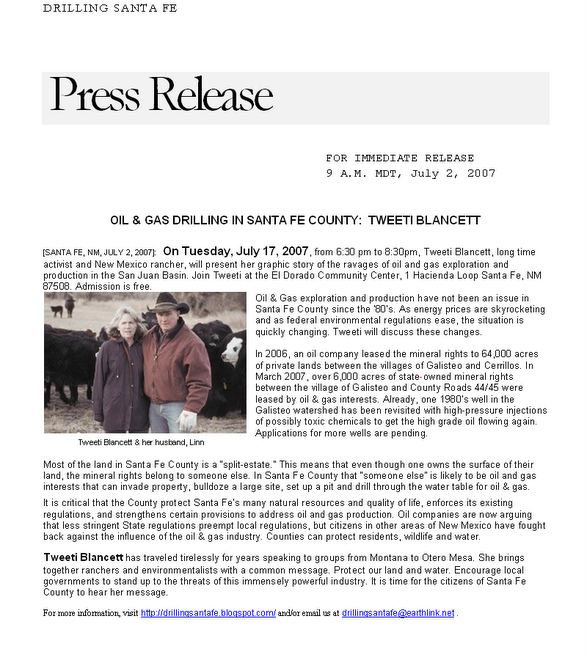A September, 2009 letter signed by 160 national, regional, state and local organizations, including conservation, faith, sportsmen and community organizations, urging members of Congress to co-sponsor S. 1215/ H.R. 2766, the Fracturing Responsibility and Awareness of Chemicals (FRAC) Act. This important legislation would repeal an exemption in the Safe Drinking Water Act (SDWA) for an oil and gas technique called hydraulic fracturing. It would also require public disclosure of the chemicals used in hydraulic fracturing fluids.
~~~
Edit to post letter (September 18, 2009):
Dear Representative/Senator:
Please read the following letter and see the 160 organizations that signed in support of the FRAC ACT. We need a co-sponsor from New Mexico.
American Rivers - Center for Food Safety – Earthjustice
Earthworks/Oil and Gas Accountability Project - Environment America
Environmental Working Group - Food & Water Watch
International Center for Technology Assessment - National Alliance for Drilling Reform
National Audubon Society - National Wildlife Federation
Natural Resources Defense Council - Public Citizen's Energy Program
Rural Community Assistance Partnership, Inc. - The Wilderness Society
Trout Unlimited - Waterkeeper Alliance - Western Organization of Resource Councils
September 10, 2009
Dear Senator/Representative:
Our 160 national, regional, state and local organizations, including conservation, faith, sportsmen and community organizations, urge you to co-sponsor S. 1215/ H.R. 2766, the Fracturing Responsibility and Awareness of Chemicals (FRAC) Act. This important legislation would repeal an exemption in the Safe Drinking Water Act (SDWA) for an oil and gas technique called hydraulic fracturing. It would also require public disclosure of the chemicals used in hydraulic fracturing fluids.
Oil and gas production is present in over 30 states, and a consistent national standard is needed for this practice. Hydraulic fracturing involves the injection of fluids into oil or gas wells at very high pressure in order to crack open the underground formation and allow oil or gas to flow out more easily. These fluids often contain toxic chemicals, some of which remain underground. The pressure places stress on the oil or gas well and can lead to unpredictable consequences. Our organizations represent communities across the country that are concerned about drinking water contamination linked to hydraulic fracturing operations. Reports of drinking water contamination come from Colorado, Texas, Arkansas, Ohio, Pennsylvania, Alabama and Wyoming.
While states regulate oil and gas production, state rules vary widely and a federal floor is needed. As stated in a study by the Hastings College of the Law, “many of the state regulatory schemes date from earlier waves of resource extraction, and have not kept pace with changed technologies, nor with a deepening concern for public health and the environment.” For example, a recent report issued by the Ground Water Protection Council found that some states do not require a well’s surface casing to be set through the deepest ground water zone. Protection of drinking water is a national concern that should not be left to a patchwork of state regulations
In 2005, Congress exempted hydraulic fracturing from the SDWA to the benefit of Halliburton and other oil and gas companies. It is time to close the Halliburton Loophole and hold the oil and gas production industry to the same standards as any other industry.
Most states have primacy for regulating underground injection; under this legislation EPA could allow states considerable flexibility to tailor their rules to local conditions. All Americans deserve to have their drinking water source protected from endangerment under federal law.
The right balance needs to be established between oil and gas development and protection of our precious and finite natural resources. Instead of that balance, however, provisions of some of our most critical federal environmental laws have exemptions for oil and gas production. In addition to the Safe Drinking Water Act, there are loopholes in the Clean Air Act, Clean Water Act, and Resource Conservation and Recovery Act. These loopholes should be closed, starting with the Halliburton Loophole.
We hope you will co-sponsor this sensible and important legislation to close the Halliburton Loophole in the Safe Drinking Water Act.
Signed,
National Organizations American Rivers, Center for Food Safety, Earthjustice, Earthworks/Oil and Gas Accountability Project, Environment America, Environmental Working Group, Food & Water Watch, International Center for Technology Assessment, National Alliance for Drilling Reform, National Audubon Society, National Wildlife Federation, Natural Resources Defense Council, Public Citizen's Energy Program, Rural Community Assistance Partnership, Inc., The Wilderness Society, Trout Unlimited, Waterkeeper Alliance
Regional Organizations Appalachian Mountain Club, Chesapeake Bay Foundation, Delaware River Greenway Partnership, Delaware Riverkeeper Network, Greater Yellowstone Coalition, Highlands Coalition, Housatonic Valley Association, Midwest Organic and Sustainable Education Service, San Juan Citizens Alliance, Western Environmental Law Center, Western Organization of Resource Councils, WildEarth Guardians
State Organizations AlabamaBlack Warrior Riverkeeper
Arizona Environment Arizona
ArkansasArkansas Conservation Alliance, Citizens Against Resource Exploitation (CARE), Omni Center for Peace, Justice & Ecology
California Ballona Network, Californians for Western Wilderness, Environment California, Grassroots Coalition
Colorado Colorado Environmental Coalition, EcoFlight, Environment Colorado, Grand Valley Citizens Alliance, Majors Ranch Property Owners Association Environmental Impact Committee, Navajo Ranch Clean Water Preservation Committee, North Fork Ranch Landowner's Association, San Luis Valley Ecosystem Council, San Luis Valley Water Protection Coalition, The Citizen's Alliance for Responsible Urban Gas Drilling, Western Colorado Congress, Wilderness Workshop
Connecticut Environment Connecticut
Florida Environment Florida
Georgia Citizens Organized for Pipeline Safety (COPS), Environment Georgia
Illinois Environment Illinois
Iowa Environment Iowa
Louisiana Lower Mississippi Riverkeeper
MaineEnvironment Maine
Maryland Environment Maryland
Massachusetts Environment Massachusetts
MichiganCitizens Against Environmental Destruction, Environment Michigan
Minnesota Environment Minnesota
MontanaEnvironment Montana, Northern Plains Resource Council
Nevada Environment Nevada
New Hampshire Environment New Hampshire
New Jersey Environment New Jersey
New Mexico Blancett Ranches, Common Ground United, Drilling Santa Fe, Environment New Mexico, Gila Resources Information Project, New Mexico Environmental Law Center, New Mexico Wildlife Federation, Velasquez Ranch
New YorkAtlantic States Legal Foundation, Inc., Binghamton Regional Sustainability Coalition, Catskill Citizens for Safe Energy, Catskill Mountainkeeper, Citizens Campaign for the Environment, Environment New York, Environmental Advocates of New York, Hudson Highlands Land Trust, Hudson Riverkeeper, New Yorkers for Sustainable Energy Statewide, Northeast Organic Farming, Association of New York, Inc., NYH2O, Orange County Land Trust, Orange Environment, Inc., PlanPutnam.Org, Putnam County Coalition to Preserve Open Space, Scenic Hudson, Shaleshock, The Ramapo River Watershed Intermunicipal Council, Theodore Gordon Flyfishers, Inc.
North Carolina Environment North Carolina
North Dakota Dakota Resource Council
OhioEast Shore Unitarian Universalist Church, Environmental Action Group, Environment Ohio, Mentor Lagoons Preservation Committee, Northeast Ohio Gas Accountability Project
Oregon Environment Oregon
PennsylvaniaAllegheny Defense Project, Berks County Conservancy, Cooks Creek Watershed Association, Damascus Citizens for Sustainability, Foundation for Pennsylvania Watersheds, Gaia Defense League, Green Valleys Association, Juniata Valley Audubon, Mountain Watershed Association, PennEnvironment, Pennsylvania Forest Coalition, Pennsylvania Organization for Watersheds and Rivers, Sagamore Estates Property Owners Association, Schmid & Company, Inc., Consulting Ecologists, Twin & Walker Creeks Watershed Conservancy, Twin and Walker Lakes Communities Coalition, Twin and Walker Lakes Watershed Conservancy, Twin Lake Preserve, Twin Lake Woods Property Owners Association, Twin Lakes Conservancy Inc., Twin Lakes Property Owners Association, Walker Lake Landowner's Association, Youghiogheny Riverkeeper
Rhode IslandEnvironment Rhode Island
Texas Blue Wind Partners, Citizens for Environmental Clean-Up, Environment Texas, Family Area Ministry & Education, Flower Mound Citizens Against Urban Drilling, Fort Worth Citizens Against Neighborhood Drilling Operations (FWCanDo), Galveston Baykeeper, PARCHED, Texas Oil and Gas Accountability Project, Unity Church of Fort Worth, WE CAN (Working Effectively for Clean Air Now)
Utah Colorado Riverkeeper Southern Utah Wilderness Alliance
VirginiaBlackwater Nottoway Riverkeeper Program, Environment Virginia
WashingtonEnvironment Washington
West Virginia
Greenbrier River Watershed Association, West Virginia Citizen Action Group, West Virginia Headwaters Waterkeeper, West Virginia Rivers Coalition, West Virginia Surface Owners' Rights Organization, Wetzel County Action Group
Wisconsin Wisconsin Environment
Wyoming Biodiversity Conservation Alliance, Clark Resource Council, Equality State Policy Center, Friends of a Legacy, Pavillion Area Concerned Citizens, Powder River Basin Resource Council, Upper Green River Valley Coalition, Wyoming Conservation Voters, Wyoming Outdoor Council
~~~
What can you do? Click here to find out!




 "The College of Santa Fe is set to profit three times as much as the Santa Fe Opera in a recent mineral rights deal in Mora and San Miguel Counties, SFR has learned.
"The College of Santa Fe is set to profit three times as much as the Santa Fe Opera in a recent mineral rights deal in Mora and San Miguel Counties, SFR has learned.



